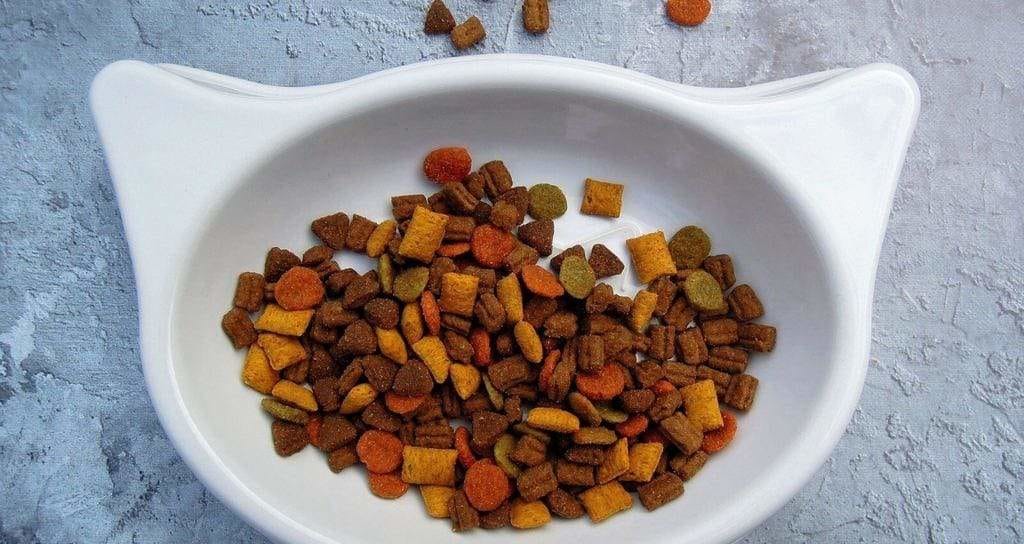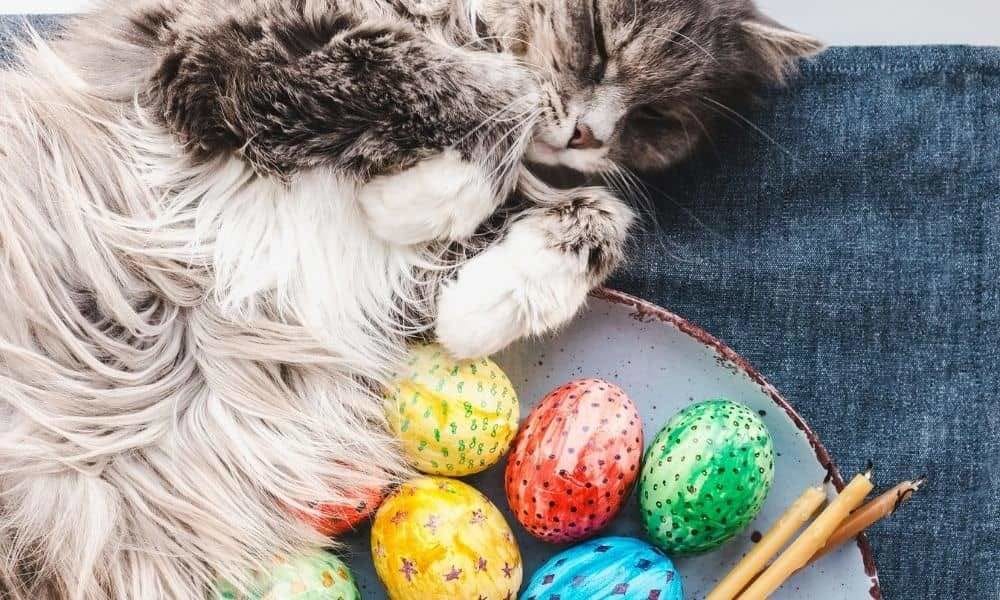Feeding your cat is not always easy. But don't try to make it vegetarian! It is indeed bad for their health, cats must have a predominantly carnivorous diet. In this article, we present to you the essential foods for a balanced diet , approved by veterinarians.
Cats need plenty of animal-based protein

Although there is no single ideal diet for all cats , in general, most cats do best when eating foods high in water and protein, and relatively low in carbohydrates.
A study published in 2011 showed that when cats have access to foods with varying concentrations of protein, fat and carbohydrates, they tend to self-select a diet that provides them with about 52% of their calories in the form of proteins, 36% in the form of fats and 12% in the form of carbohydrates.
To put it quickly, there is no such thing as a vegetarian cat! In addition to giving your cat a high quality food, please avoid lactose, raw fish among others. We will come back to this.
Age really matters

Your cat's age is one of the most important factors to consider when purchasing food for them. Depending on the stage of life, the level of activity differs and implies different nutritional needs. Kittens are therefore logically more active than their elders. As a result, they need an enriched diet that supports their rapid growth.

On the other hand, baby kittens are like human babies: they don't eat the same foods as adults, because they need different nutrients depending on their body development. You can summarize your cat's diet with the phrase: for all stages of life, a suitable diet!

Pay attention to the description on the packaging , it is best to look for the nutrition corresponding to each stage of your pet's life.
High-quality kitten food is grain-free and made with real ingredients, like duck and turkey, full of moisture and vitamins, full of added amino acids to give them a healthy immune system as they grow.
Your cat's nutritional needs may vary over time

In addition to purchasing foods based on your cat's life stages, consider any potential disorders or sensitivities they may acquire over time. For example, cats who are nursing their kittens need a much higher calorie diet , and some cats who develop allergies need a simpler diet. Your veterinarian will be able to help you meet these specific needs.

For example, older cats need a diet high in protein and moisture to support their renal system , while being lower in fat and calories to avoid weight gain, which can have adverse health consequences. For older indoor cats, a grain-free food is an excellent option. Thanks to the humidity of the food, your elderly cat, who loses his teeth over the years, will be able to chew and eat more easily.
Wet foods may be better

While quality matters, in general wet food is the best option for cats when choosing between canned wet food and kibble. In general, wet food meets the nutritional needs of the cat better than dry food, but this is not always the case if the wet food in question is of very poor quality.
Be sure to clean your cat's bowl thoroughly between meals of wet food, as it can harbor bacteria, which could make your cat sick.
Beware of catchy labels

Cat food brands work hard to make their products stand out on the shelves. However, be wary of catchy terms such as "primitive", "ancestral" or "natural".
These terms are pure marketing. Instead of looking for flashy words, pet parents should look carefully at a food's label, peeling away its components to determine whether it might make good food.
Cats should reduce their carbohydrate intake

As we mentioned, cats are carnivores who require a large amount of animal protein in their daily diet. According to experts, cereals, containing carbohydrates, should represent a minor part of the cat's diet.
In many of these products, there are “fillers” that are actually ingredients completely devoid of nutrients. They should be avoided. Too much grain in a cat's diet can lead to malnutrition, obesity, organ and digestive tract problems . It's important to know the signs, often unspoken, that indicate your cat is sick.
Some human foods are accepted on occasion

Packaged foods are designed to meet the dietary needs of cats. Although it is best to only get these types of foods, you can offer them a small treat from time to time , such as small pieces of your own meals.
Meat, cooked fish are wonderful treats for cats. Other treats include cooked egg, melon, and mashed sweet potatoes . Conversely, the list of foods prohibited for your feline is long, and notably includes chocolate and grapes.
Cats Really Shouldn't Eat Dog Food

You may have wondered if cats can eat dog food - after all, the products on offer all seem to be the same. However, the answer is no.
If your cat "steals" a bite from your dog's bowl from time to time, no worries, as long as at least 90% of its diet remains cat food. Indeed, cats need a diet rich in animal proteins. However, dogs have completely different dietary needs, and their food is therefore formulated according to their nutritional grid.
Buy foods in smaller quantities.
Buying 10kg bags of kibble , boxes of food in large quantities can be financially interesting. Please note that they are dedicated to households with several cats . Try to get as much as your cat eats in a month or even three weeks.

Meals: when and how
Besides the type of food you give your feline companion, the amount of food you give him and when you give it are also important factors in his well-being. It is a common behavior to freely feed your cats , or let them snack at any time.
However, most veterinarians recommend giving them fixed amounts at the same times each day. Uncontrolled eating can easily lead to obesity which, in turn, can lead to more serious health problems like joint diseases and diabetes.

Treats are treats!
Cat treats , like human treats, are generally higher in calories and should therefore be given sparingly. Veterinarians recommend using them strategically when training or curbing aggressive behavior. By eating treats too often, your cat can disrupt its nutritional balance and distort its appetite for the traditional food it really needs.

Try to make mealtime more fun
In addition to needing meat, cats do well when they exercise their instinct to hunt for food. There are a number of toys that make eating feel like a game, like interactive kibble dispensers!
Your veterinarian can help you find the best diet for your cat

A cat can sometimes behave like a child, capricious and narrow-minded . Their taste can make finding the right food even more difficult. Your best bet is to consult your veterinarian. It will find the right balance of nutrients for your pet's unique needs.
Foods not to give to your cat
Milk, cheese and other dairy products
The image of kittens drinking milk or cream in cartoons is common. But in reality, cats don't like dairy products . Most cats are naturally lactose intolerant. As a result, cow's milk and dairy products derived from it - such as cheese or cream - can upset their stomach and cause vomiting such as diarrhea.
And what about kittens? The same goes: cow's milk and derived products should be avoided. Concerning kittens who are still too young to eat solid food and who do not have a source of breast milk, veterinarians recommend special preparations, based on nutrients essential for their growth and gentle on their stomach.
Chocolate

Many of us love chocolate, but this cocoa-based treat contains two ingredients that are toxic to cats: theobromine and caffeine. In particular, milk chocolate and dark chocolate are responsible for several dangerous symptoms including: vomiting, diarrhea , increased body temperature, rapid heart rate, epileptic seizures.
Cats may suffer from heart failure, weakness or coma if there is a large intake of theobromine or caffeine.
Raw eggs, meat or fish
Raw is the natural state of meat. If your cat likes to hunt, why not give it to him? The same as eggs or raw fish. However, you should know that these raw foods can contain dangerous bacteria such as E. coli and other salmonella.
By ingesting them , your cat could contract diarrhea, vomit, suffer from lethargy, or even die. Raw egg whites contain a protein called avidin, which, if ingested, can prevent your cat from properly absorbing biotin, a form of vitamin B, causing skin problems and a dull coat.
Bread and yeast

On some occasions, you can allow your cat to eat bread without replacing its normal diet. Keep in mind that it actually has no nutritional value for him (it does not contain protein). Yeast and raw bread dough are not safe for cats - after being eaten, the dough can rise into the cat's stomach and cause dangerous digestive problems.
Onions and garlic

Onions, garlic, and other members of the allium family like chives and leeks are often culprits in causing anemia in cats. Whether raw, cooked, powdered or dehydrated, garlic and onions can damage a cat's red blood cells , and can also cause nausea, abdominal pain, vomiting and diarrhea.
Remember that most cats are curious creatures and love to examine food left on the counter or in the sink. If your cat tends to jump easily onto surfaces, then keep dangerous or toxic foods out of reach - behind a closed pantry door or in a high cabinet.
We hope this guide provides you with the information to provide your cat with a suitable diet.
